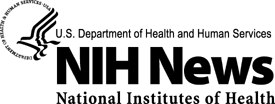28 Oct 1998: Rodent Cancer Data to Be Reviewed on Food Flavoring, Solvent, Cosmetic Ingredient, Anabolic Steroid and Embalming Fluid
The National Toxicology Program Board of Scientific Counselors on Friday will peer review rodent cancer studies of five substances and the strength of any carcinogenic activity as interpreted by the National Toxicology Program staff before publication as NTP Technical Reports. The substances are:
- methyleugenol, a flavoring agent used in jellies, baked goods, ice cream, soft drinks and chewing gum, naturally present in some foods, and a fragrance for perfumes. The studies presented what NTP staff called "clear evidence of carcinogenicity" in both sexes of rats and mice. "Clear evidence" is the strongest category of evidence for carcinogenic activity in NTP studies. However, further studies are underway to examine the relevance of these findings for human health;
- oxymetholone, a synthetic anabolic steroid available by prescription to treat delayed puberty and used, illicitly, by some athletes to "bulk up." The studies conducted in rats provided what NTP staff called "clear evidence" of carcinogenic effects at several sites in female animals;
- triethanolamine, an ingredient in some cosmetics and detergents as well as a chemical intermediate used in making other products. The NTP staff found the studies demonstrated "some evidence" of carcinogenicity in female mice, while showing only marginal or no carcinogenic activity in male and female rats. " Some evidence" indicates definite association of chemical exposure with cancer causation but the findings are not as strong as for clear evidence. The studies in male mice were determined to be inadequate due to an infection;
- ethylene glycol monobutyl ether, or 2-butoxyethanol, used in latex paint, and paint thinners and strippers, and many industrial and household cleaners. The studies demonstrated "some evidence" of carcinogenicity in male and female mice, while there was uncertain or no evidence of carcinogenicity in rats; and
- glutaraldehyde, a disinfectant, preservative and fixative used in embalming fluid and tanning material for soft leathers. The studies indicated there were no carcinogenic effects of this chemical in either sex of rats or mice.
The review, open to the public and open for public comment, will begin at 9 a.m. in the conference center of the National Institute of Environmental Health Sciences, 111 T. W. Alexander drive, Research Triangle Park, NC. The draft reports are available via the Internet at http://www.ehponline.org/ or by mail by calling (919) 541-3419.



